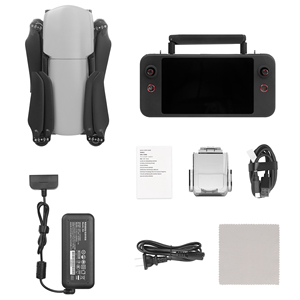(1164 products available)























































































































































































































Drones camera target are used extensively in military exercises to provide realistic simulation of enemy activity for training purposes. These target drones come in various types, each designed to fulfill specific needs. Here are some common types:
Drone camera targets are used for various purposes across multiple industries. Here are some common usage scenarios:
Filmmaking
Drone camera targets offer filmmakers expansive aerial views, which help create stunning shots that would be costly or impossible to achieve using helicopters. Additionally, they are used for tracking shots to follow subjects and add dynamism to scenes. Moreover, they help capture high-altitude shots that add context and grandeur to a film's setting.
Photography
These devices are used to capture stunning landscapes and cityscapes from above, providing unique perspectives that ground photographers cannot achieve. Also, they are suitable for taking high-angle shots of events such as weddings and sports, which add excitement and a different viewpoint to the event's documentation. Additionally, the drones can take panoramic photos and create breathtaking wide-angle views by automatically combining several pictures.
Real Estate Marketing
Drones are used in real estate to create impressive aerial views of properties, showing their size and location concerning the surrounding area. Additionally, they are used to take dynamic footage of the property, which highlights various features and appeals to potential buyers or renters.
Surveillance and Security
Drones are used for monitoring large areas, such as campuses, parks, and properties, which makes it easy to identify potential security threats. Also, they provide live footage for security personnel, which helps them assess situations in real time and respond promptly.
Agriculture
Drone camera targets are used for crop monitoring, where they provide farmers with health assessments of the crops. This is done by using special sensors that detect issues such as pest infestations or diseases early. Moreover, the drones can assess irrigation systems, helping farmers ensure their crops get adequate water.
Search and Rescue
Drones are used by search and rescue teams to cover large and difficult terrains quickly. They help find missing persons by providing aerial images of the searched areas. Additionally, the drones can be equipped with thermal cameras to identify heat signatures of missing persons at night or in challenging weather conditions.
Construction and Infrastructure
These devices are used in construction to capture progress footage and documentation. This helps project managers track development and provides evidence in case of disputes. Also, they help perform inspections of hard-to-reach areas, such as roofs and towers, which ensures that structures are built correctly and maintained.
When buying a drone with a camera for resale, business owners should consider the features, purpose, and reviews. Below is more information to guide buyers in selecting the suitable drones.
The primary reason for getting a drone is its purpose. Different industries use drones for various purposes. For instance, the agricultural sector uses drones for crop monitoring and spraying. Real estate companies use drones to take aerial photos and videos of properties. Understanding the purpose will help buyers get the appropriate drone for their target market.
The drone's features will determine its performance and the quality of the videos and photos. Buyers should consider the camera resolution, which is in megapixels. Generally, the higher the megapixels, the better the quality of the photos. The camera's field of view (FOV) should also be wide to capture more details in the photos and videos.
In most cases, a drone's camera will have an adjustable gimbal. A gimbal helps stabilize the camera when shooting moving photos and videos, preventing blurriness. Additionally, buyers should consider the drone's maximum flight range, speed, and altitude. More importantly, check the flight time, which is the duration the drone can stay airborne before it needs to recharge.
Read reviews and ratings to get information on the performance of the drones and the experience of other customers. This information is useful in determining if the drones have any issues and if they are worth buying. Buyers should also read the reviews on the supplier's page to see if the drone will be delivered as advertised and the quality of the drones' cameras.
Target drones with cameras are designed for various functions, which include:
Some common features of target drones with cameras include:
Target drones come in various designs and sizes to meet different needs and requirements. Some target drones are small and compact, while others are larger and more robust. The size and design of a target drone will affect its flight performance, durability, and target potential.
Q: What does drone camera target refer to?
A: The target refers to the object or area that a drone's camera captures or focuses on. This could be anything from scenic landscapes, urban areas, wildlife, or specific objects or events. The target can be a moving object like a sports team or vehicle, or it can be stationary like a building or a natural feature. Drones with good cameras can capture high-quality images and videos of the target, making them useful for various applications such as aerial photography, videography, surveillance, mapping, and inspection.
Q: What role do drones play in wildlife photography?
A: Drones have transformed wildlife photography by allowing photographers to capture stunning images and videos of animals in their natural habitats without disturbing them. Drones can fly quietly and at low altitudes, enabling close-up shots of animals in action. They also provide unique perspectives, such as aerial views of animal herds or bird nests, which were previously difficult to obtain. Moreover, drones can reach remote or inaccessible areas, allowing photographers to document wildlife in locations like mountains, dense forests, or coastlines. Overall, drones have made wildlife photography more versatile and impactful.
Q: Which industries utilize tracking drones?
A: Several industries use tracking drones. They include the following: